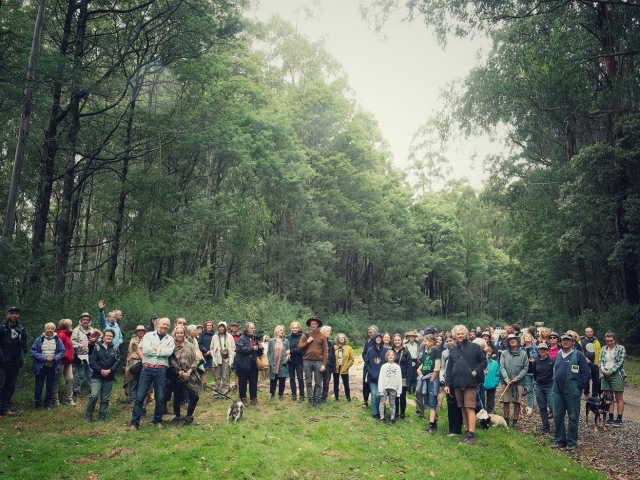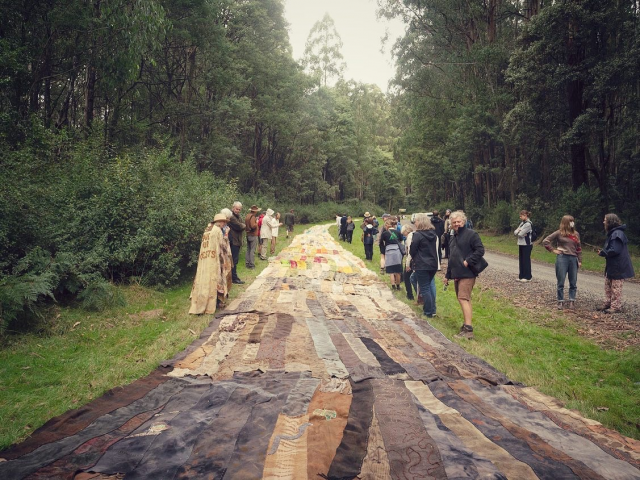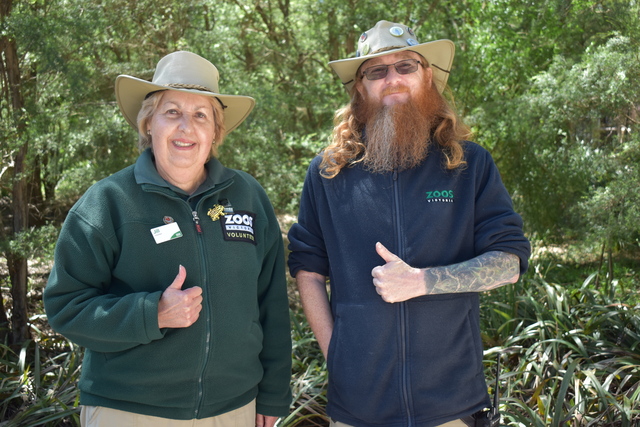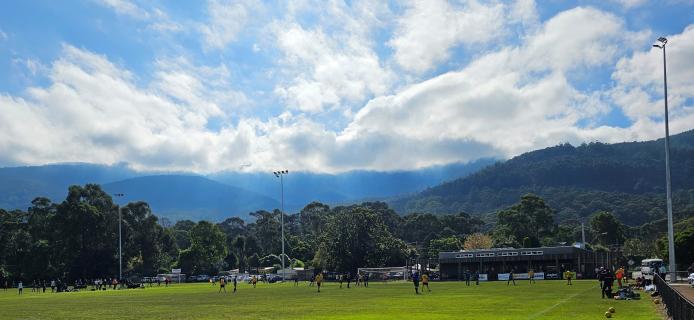Community groups have gathered at a rally to save the Tanglefoot and Myrtle Gully Walking Tracks in Toolangi from nearby logging.
The two proposed coupes identifiable as 297-535-0005 at 48.54ha and 297-535-0002 at 37.85ha were recently listed in VicForests’ Timber Release Plan in March, coming at a shock to many locals.
Kinglake Friends of the Forest President Sue McKinnon said the event was held on Saturday 9 April to inform others of the proposed logging at and surrounding the highly valued tracks.
“This is one of the most popular tourism walks in state forest in our area,” Ms McKinnon said.
“The picnic ground is within the boundary of the proposed site…. As far as tourism goes, a lot of people do visit that track, it leads you from that Tanglefoot visitor picnic area to the Wirrawilla rainforest walk, which a lot of people know.”
Ms McKinnon said the demonstration was to also share their greater stance against losing mountain ash forests to native timber logging.
“We took people there to illustrate what is happening in all areas of our state forest and we’re asking people to write into the government and ask that native forest logging cease and no new coupes be put on the timber release plan.”
The Timber Release Plan shows allocated coups for Vicforests covering areas in the Eastern defined forest area.
The document was amended and released in September last year marking 8000 hectares for logging between 2021 -2025 however, further proposed changes were issued in March.
The Toolangi sites in question are among 213 new coupes that were added to the plan last month.
Ten different community groups were represented at the rally and the Great Tree Project also formed part of the gathering – a project which is using craft as a statement.
The 80 metre hand made tree has been created out of recycled blankets and has been decorated using eco-dyes and handmade animals and poetry.
Great Tree Project founder Karena Goldfinch started the project during lockdowns and said the rally was the tree’s first outing.
“The idea is to lay it on the ground so that people can see and have an idea of the important hollow bearing trees. So we ask people to walk with us and discuss this,” Ms Goldfinch said.
Those against the areas being included in the Timber Release Plan have submitted feedback during the 30 day community consultation period.
They’ve aired their concerns on the disruption it will cause to the popular walking track and to critically endangered species which are believed to live in the area, such as the greater glider.
“If we keep logging this 1939 regrowing forests, we won’t get any trees with hollows. They won’t get to be old enough to become hollow bearing habitat – it’s as simple as that,” Ms Goldfinch said.
VicForests uses it’s native timber harvesting to fulfill contracts for wood chip and paper contracts, including supplying Opal Australia’s paper mill in Maryvale.
A VicForests spokesperson said the consultation has concluded and the feedback will be considered.
“As part of its established process, VicForests is considering the feedback received and if appropriate, proposed plans will be modified or amended,” they said.
“The Timber Release Plan supports the ongoing, responsible timber supply to local customers and contractors in accordance with the Government’s Victorian Forestry Plan.”
The Kinglake Friends of the Forest also fear the state’s mountain ash forests are at risk of collapse in decades time if native logging doesn’t halt immediately.
In submitted consultations their request to stop native logging has also been detailed, ahead of the State Government’s 2030 deadline that was announced in 2019.
The ecosystem has been listed on the International Union for the Conservation of Nature’s (IUCN) Red List of Ecosystems and is categorised as ‘critically endangered and at risk of collapsing’ based on an ecological assessment conducted in 2014.
Dr Emma Burns, from the Australian National University Fenner School of Environment and Society formed part of the research and worked with colleagues to model 39 different scenarios and found 92 to 99.99 per cent chance of collapse of the mountain ash forest in Victoria’s Central Highlands by 2067.
“If there’s a small fire, or any level of harvesting, then collapse in the next 50 years jumps up to 97 per cent. If there’s a large fire – think Black Saturday – then there’s basically a 100 per cent chance of collapse,” Dr Burns said when the assessment was presented in 2020.
VicForests responded to the assessment and said the study had some limitations.
“The report indicates 20 per cent of Mountain Ash forests are preserved from timber harvesting; whereas at least 70 per cent of the forest is preserved from timber harvesting,” they wrote in their response summary.
VicForests said it has implemented a range of changes to improve protection of high conservation values such as formalised hollow-bearing tree surveys.
It is also strengthening management systems through research, monitoring, and adaptive management.









